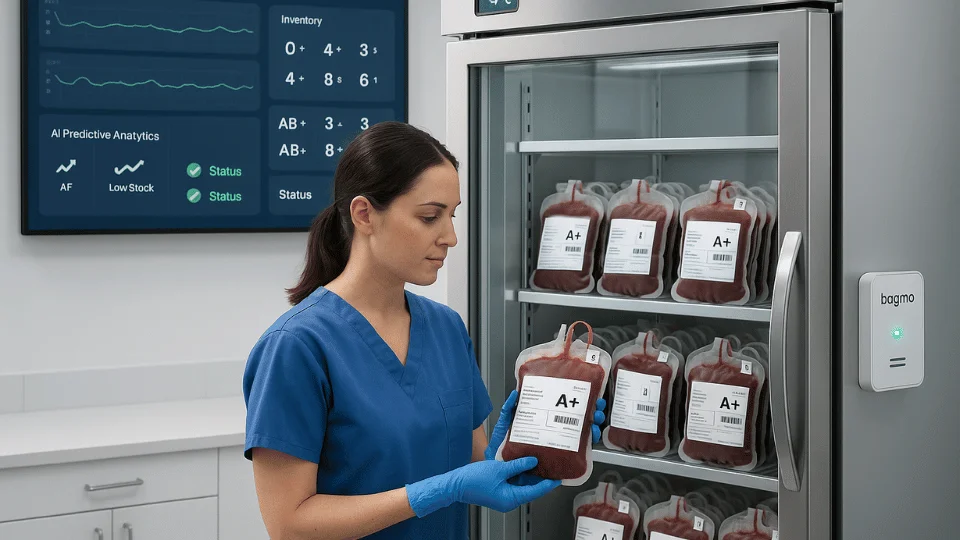Why Real-Time Alerts are Non-Negotiable for Blood Bank Temperature Monitoring
Blood banks are the lifelines of our healthcare system, handling precious resources that save lives daily. But the viability and safety of blood components like Packed Red Blood Cells (PRBCs), Fresh Frozen Plasma (FFP), and platelets hinge critically on one factor: temperature. Maintaining the precise, mandated temperature range isn't just a guideline; it's a fundamental requirement for patient safety, product efficacy, and regulatory compliance in India.
For too long, traditional methods have offered a limited view, often revealing problems only after they've occurred. In a field where minutes can mean the difference between viable blood and unusable waste, a reactive approach is simply not enough. We need proactive, continuous monitoring with real-time alerts.
The Critical Stakes: Why Temperature Matters So Much
Blood components are highly sensitive biological products. Deviations from their specific storage temperatures can lead to:
- Reduced Therapeutic Efficacy: Components can degrade, losing their ability to function correctly when transfused (e.g., oxygen-carrying capacity of RBCs, clotting factors in plasma).
- Bacterial Growth: Warmer temperatures can encourage bacterial proliferation in components like PRBCs, potentially causing life-threatening sepsis in recipients.
- Physical Damage: Freeze-thaw cycles or improper temperatures can damage cell membranes (haemolysis in RBCs).
- Wastage: Excursions often mean discarding entire batches of irreplaceable blood products, straining supply and wasting valuable donations.
- Regulatory Non-Compliance: Indian regulations, including the Drugs and Cosmetics Act, 1940 (Schedule F, Part XII B) and NACO guidelines, strictly mandate specific temperature ranges and continuous monitoring with record-keeping. Failure can lead to severe penalties.
Mandated Temperature Ranges: No Room for Error
Different blood components require different storage conditions:
- Packed Red Blood Cells (PRBCs): Must be stored between +2°C and +6°C.
- Fresh Frozen Plasma (FFP) / Plasma: Needs freezing. Long-term storage often requires Ultra-Low Temperatures (ULT) from -40°C to -80°C or colder. Standard storage is typically at -18°C or colder.
- Platelets: Require storage at +20°C to +24°C with continuous gentle agitation.

The Dangerous Gaps in Traditional Monitoring
Many blood banks still rely on methods that fall short of ensuring constant safety:
- Manual Chart Recorders: Provide trends but miss excursions between periodic checks and offer no automated alerts.
- Basic USB Data Loggers: Log data but lack real-time alerts. Issues like overnight freezer failures are only discovered *after* manual download, often too late. Data integrity can also be a risk.
The Undeniable Requirement: Real-Time Alerts
There is simply no reliable way to guarantee the safety of stored blood products without a system that provides immediate alerts. Equipment malfunctions, power outages, or even a door accidentally left ajar can occur at any time.
- Immediate Intervention: Real-time alerts (via SMS, email, app notifications) instantly notify designated staff the moment a temperature deviates.
- Proactive Response: Allows personnel to take immediate corrective action before components become unusable.
- Saving Precious Resources: Timely alerts directly translate into saved blood units, preserved efficacy, and enhanced patient safety.
Beyond Compliance: The Commercial Advantage of Assured Quality
The need for robust monitoring extends beyond immediate safety and compliance. High-quality plasma is a valuable commodity sought after by pharmaceutical companies for fractionation into essential medical products.
Blood banks that can provide verifiable, continuous, and documented proof of maintaining stringent ultra-low temperatures for their plasma inventory can:
- Assure Quality: Demonstrate the integrity and potency of the plasma.
- Command Better Prices: Achieve significantly higher revenue.
- Build Strong Partnerships: Become preferred suppliers.
This commercial aspect underscores how investing in advanced monitoring isn't just a cost centre but can contribute to the financial sustainability of the blood bank.
The Solution: Moving to Advanced Monitoring
Modern temperature monitoring systems, particularly those utilising GSM or Wi-Fi connectivity, directly address the shortcomings of older methods. They offer:
Continuous, Automated Logging
Records temperature 24/7 without manual intervention.
Real-Time Data Access
Secure cloud platforms allow viewing data anytime, anywhere.
Instant, Configurable Alerts
Immediate notifications via multiple channels when deviations occur.
Tamper-Proof Data
Secure data trails suitable for regulatory audits.
Automated Reporting
Simplifies compliance documentation.
Loggfi: Securing India's Blood Supply
At Loggfi, we specialize in providing advanced temperature monitoring solutions designed to meet the stringent requirements of Indian blood banks. Our systems offer the real-time alerts, reliable data logging, and compliance support needed to safeguard blood products effectively. Explore Loggfi Blood Bank Solutions.
Conclusion
Temperature monitoring in a blood bank is a zero-tolerance game. Relying on manual charts or basic USB loggers without real-time alerts introduces unacceptable risks to patient safety, product viability, and regulatory standing. The ability to intervene immediately thanks to automated alerts is paramount. Furthermore, demonstrating impeccable temperature control through advanced monitoring unlocks potential commercial advantages. Investing in modern, alert-capable systems like GSM or Wi-Fi data loggers is no longer optional; it's an essential requirement for any blood bank committed to quality, safety, and sustainability.